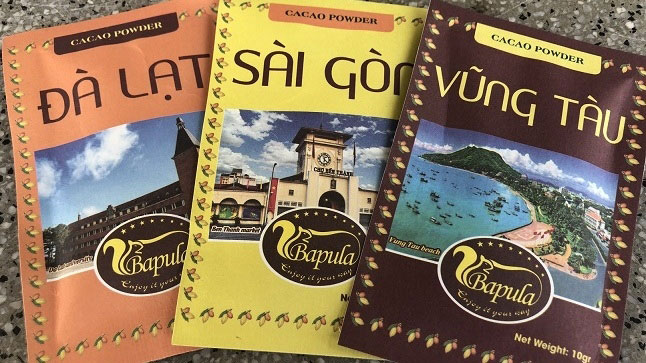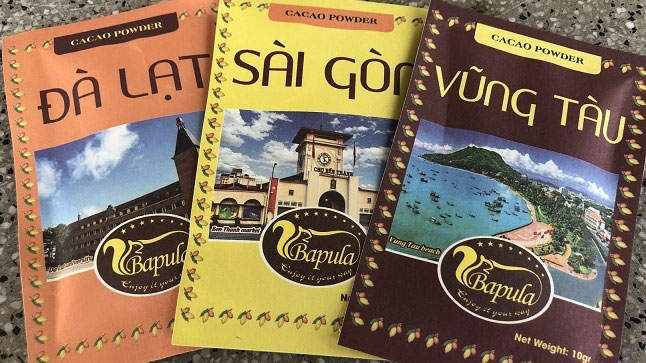
Amazon Foods Co., Ltd. put into operation a factory to produce cacao powder and chocolate candies of the brand Bapula in Tan Hai commune, Phu My town, Ba Ria-Vung Tau province, on August 5.

Cacao powder of the brand Bapula
According
to Ho Si Bao, Director of the company, the factory covers an area of 700 metres
square, using a production line of Belgian technology with a capacity of
roughly 1 tonnes per month.
The main source of cacao for chocolate
production is purchased by farmers in Chau Duc district with an area of about
800 hectares, as well as from the Bapula Ba Ria cocoa cooperative, in Chau Duc
district, with an area more than 100 hectares. Cacao cultivation and care
practices in the cooperative comply with the organic production standard.
The factory offers products such as cacao
beans, cacao powder, chocolate candies such as chocolate with 68% cacao,
chocolate with 72% cacao, chocolate candy with sticky cacao and peanut; Cacao
powder 3 in 1, and cacao wine.
In addition, a stopover for visitors was built
on the grounds of the factory. Visitors will have a chance to visit and
experience the process of making chocolate.
Source: NDO
With an increasingly vibrant and widespread emulation movement aimed at building cultured residential areas and cultured families, Yen Thuy District has been making steady progress toward improving both the material and spiritual well-being of its people, while fostering a civilized, prosperous, beautiful, and progressive community.
Once lacking recreational spaces and community facilities, Residential Group 2 in Quynh Lam Ward (Hoa Binh City) has recently received attention for the construction of a new, spacious, and fully equipped cultural house. The project followed the model of state support combined with public contributions in both labor and funding.
The "All people unite to build cultural life" movement, which has been effectively integrated with Kim Boi district’s socio-economic development goals, is fostering a lively spirit of emulation across local residential areas, hamlets, villages, public agencies, and enterprises. In addition, through the initiative, traditional cultural values are being preserved and promoted, while community solidarity and mutual support in poverty reduction and economic development are being strengthened.
A working delegation of the Hoa Binh provincial People’s Committee led by its Permanent Vice Chairman Nguyen Van Toan on June 11 inspected the progress of a project to build the Mo Muong Cultural Heritage Conservation Space linked to tourism services in Hop Phong commune, Cao Phong district.
Born and growing in the heroic land of Muong Dong, Dinh Thi Kieu Dung, a resident in Bo town of Kim Boi district, in her childhood was nurtured by the sweet lullabies of her grandmother and mother. These melodies deeply imprinted on her soul, becoming an inseparable part of her love for her ethnic group's culture. For over 20 years, this love for her hometown has driven Dung to research, collect, and pass down the cultural values of the Muong people to future generations.
In the final days of May, the Ethnic Art Troupe of Hoa Binh Province organized performances to serve the people in remote, mountainous, and particularly disadvantaged areas within the province. These were not just ordinary artistic shows, but they were the meaningful journeys aimed at spreading cultural values, enhancing the spiritual life of the people and contributing to the preservation of ethnic minority cultural identities.



